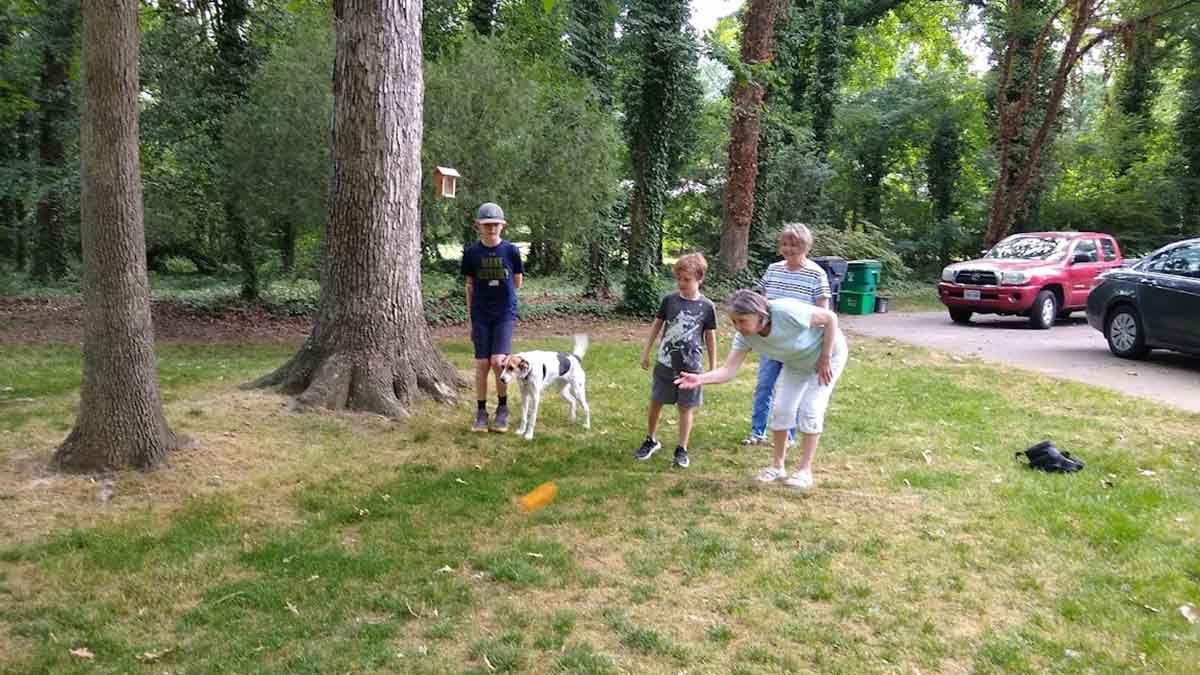In the late afternoon, when the summer heat has broken for the day, but the sun has not disappeared for the night, four people step into a backyard, their favorite beverage in hand, and select two matching wooden balls out of a colorful collection of eight. A player picks up a small white ball, about the size of a golf ball called the jack, or pallino, and tosses it out onto the lawn. A game of backyard bocce commences.
Bocce, a simple game requiring minimal skill, has a long history dating back to the Roman Empire. Over time, its popularity spread from Italy to many other countries, including the United States. In 1991 it became an event in the Special Olympics.
The formal play takes place in a wooden framed court 90 feet long and between 8.2 and 13.1 feet wide. Typically, a coin toss determines who will throw the jack out first. Then, each player throws one ball at a time and tries to get their balls closest to the jack. A player may knock aside an opponent’s ball or move the jack with the throw.
After each player has made their two attempts, the group gathers around the tossed balls and reaches a consensus on which ball landed closest. An umpire makes this decision in league play. The owner of the balls with that color gets the point, and if the second closest ball is the same color, that player receives two points. The remaining players get no point for that round. A tape measure settles any disputes. The first player to reach twelve points wins the game.
Many leagues exist for serious competitive play, with strict rules and umpires. But I prefer the casual game referred to as backyard bocce. As the name suggests, this informal version played on the lawn of a yard without strict rules and umpires. Scoring remains the same, but the players set their own boundaries using bushes, swing sets, grills, or anything available to mark off the edges. Or they can play free-range backyard bocce with no borders, and the jack can land anywhere in the yard.
The round winner throws the jack for the next round and then makes the first ball toss. By doing this, that person presents their ball early, and the other players can attack it if they choose. Since the last to throw always has an advantage, rotating the order of pitches provides balance.
Players are free to toss their colored balls any way they want. Most roll the ball, trying to read the curves, slopes, and dips in the yard, the way a golfer reads a green. Some put backspin on it. Others lob it in the air, sometimes referred to as the bombardier approach, which is the only way you can play this game on a beach’s dry sand.
Unlike other backyard activities, Bocce requires no setup. There are not the hoops and pegs needed for croquet, no net as in badminton, and no boards necessary as in cornhole. It only requires the colored balls, the jack, and a measuring tape. A backyard bocce set sells for about $30.
If you are out for a walk on a warm summer’s eve and you hear excited shouts from a backyard, chances are a game of backyard bocce is the source.
Steve Bailey grew up in the Panama Canal Zone, was educated in Minnesota, and taught middle school for thirty-two years in Virginia. He can be contacted at vamarcopolo.com.

Let's keep in touch!
Keep up with the latest OutLook by the Bay information by signing up here. We promise not to waste your time.


